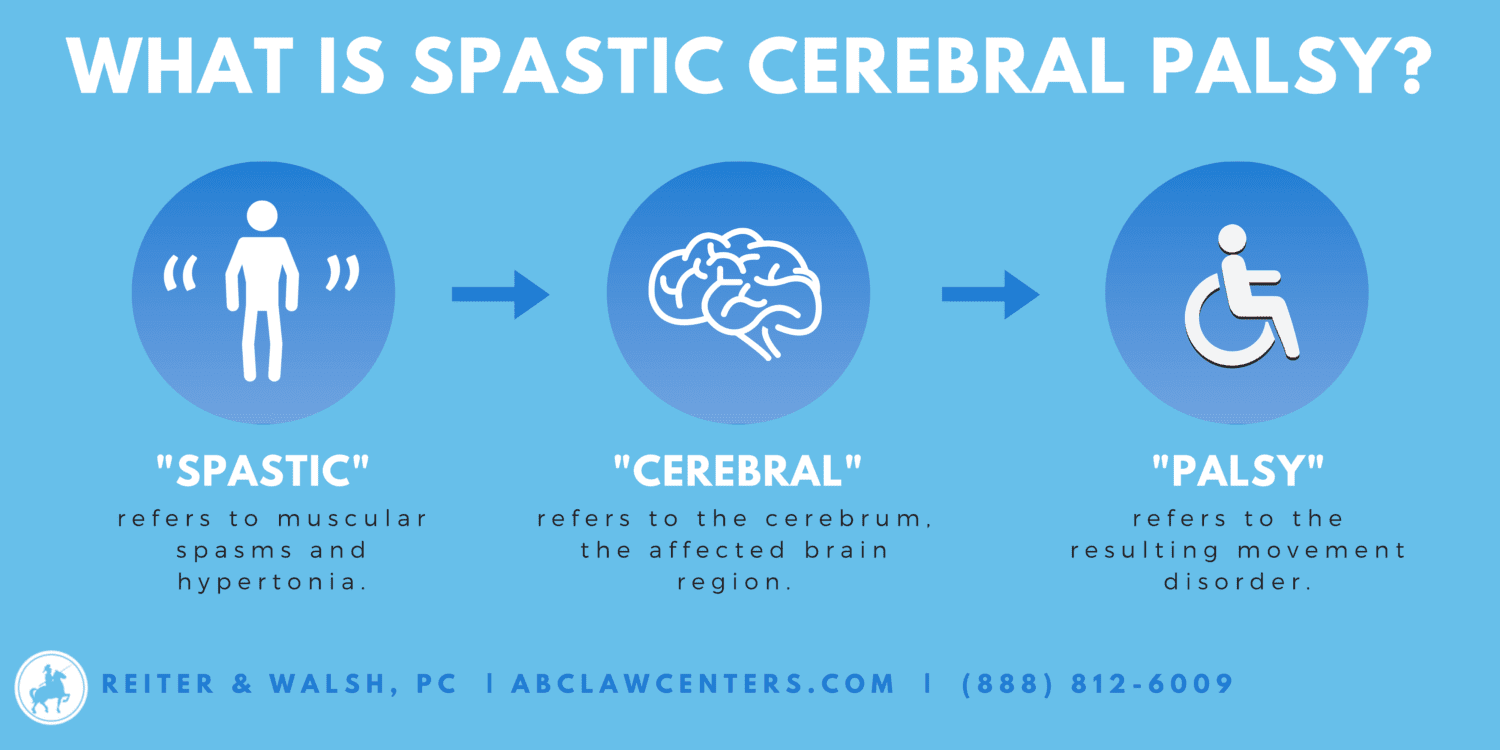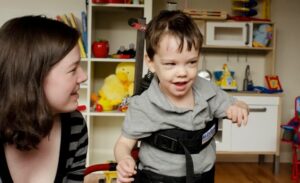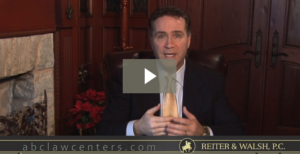What are the treatments and therapies for spastic cerebral palsy?
There are numerous treatments and therapies for spastic cerebral palsy. These include therapeutic treatments, supportive treatments, surgical interventions, and medical interventions. These therapies are usually combined for maximal effect as part of a comprehensive treatment plan.
What forms of spastic cerebral palsy do treatments address?
Spastic cerebral palsy is the most common type of cerebral palsy (CP), affecting approximately 80% of children who have CP (1). Children with spastic cerebral palsy have very stiff and tight muscle groups. Spastic muscles are always contracting, and there is weakness of the muscles opposing the spastic ones. This causes abnormal positions of the joints on which the muscles act. The joints can become deformed, which may cause them to become fixed in place (a fixed contracture) over time.

The most common type of spastic cerebral palsy is spastic diplegia, which is characterized by involvement of the lower extremities (1). Most children with spastic diplegia have at least some capacity to walk, but the muscles are very tight and the children have a scissor gait. A scissor gait is when the child appears to be crouching because tightness in the hips, legs, and pelvis keep these areas flexed to various degrees. In addition, muscles called adductors cause the knees and thighs to hit each other or cross in a scissor-like movement. The child is often forced to walk on tiptoe.
Clonus and muscle spasms are not uncommon. Clonus is a series of involuntary rhythmic muscular contractions and relaxations (2). These are caused by the pain and/or stress of muscle tightness, indicating especially hard-working and/or exhausted muscles. The spasticity itself can lead to very early onset of muscle-stress symptoms such as arthritis and tendonitis.
Who provides therapeutic care to children with cerebral palsy?
Treatment for spastic cerebral palsy occurs on a multitude of fronts. The child’s physician should work closely with physical, speech, and occupational therapists to improve the child’s ability to move, speak, and perform everyday activities such as going to school. An orthotics and prosthetics team can provide braces and other orthotic devices to help with balance, walking, and movement. Medicines can help relax muscle spasms and control pain and seizures. Sometimes surgery is performed to lessen spasticity.
It is important to have trained professionals involved in every aspect of treatment for spastic cerebral palsy. Some children with spastic cerebral palsy have difficulty communicating, which is another reason why trained professionals must be involved – professionals can notice problems that could become serious or life-threatening that parents may not spot.
Types of therapy for spastic cerebral palsy
Physical therapy for spastic cerebral palsy
Physical therapy for cerebral palsy is aimed at promoting motor and developmental skills. It is used to address sensory impairments, range of motion issues, muscle tightness, and other physical concerns (3). The parent or caregiver should be taught the exercises or activities that are necessary to help the child reach their full potential and improve function.
Physical therapy helps with balance, movement, and walking independently or using mobility aids (3). Some individuals with spasticity can experience painful contracture, joint deformities, and other complications. Physical therapy can prevent and treat these issues. Daily range-of-motion (ROM) exercises are important to prevent or delay contractures caused by spasticity and to maintain the mobility of joints and soft tissues (4).
Children and their parents often enjoy hippotherapy (therapeutic horseback-riding; this is a type of complementary/alternative therapy). Hippotherapy uses the rhythmic gait of a horse to help improve the child’s muscle tone, ROM, strength, coordination, and balance. It offers many social, cognitive, physical, and emotional benefits.
Physical therapy is crucial when a child has had surgery to help correct spasticity; it helps the child obtain maximum benefit from surgery.
Occupational therapy for spastic cerebral palsy
Occupational therapy is a type of therapy that utilizes common tasks in daily life (5). Occupational therapy for children with spastic cerebral palsy should focus on daily life activities, such as feeding, dressing, toileting, grooming, and transfers. Occupational therapy focuses on gaining life skills, independence, happiness, and improved quality of life. The goal should be for the child to function as independently as possible with or without the use of adaptive equipment.
Occupational therapy utilizes (5):
- Household items
- Games and interactive play
- Adaptive tools and assistive technologies
- Toys that help with motor function
Speech therapy for spastic cerebral palsy
Some children with spastic cerebral palsy have involvement of the face and upper airway, causing drooling and difficulty swallowing and speaking. Speech therapy can be used to help improve swallowing and communication. Some children benefit from assistive communication devices if they have some motor control and adequate cognitive skills.
Recreational therapy for spastic cerebral palsy
Incorporation of play into a child’s therapy program is very important. Ideally, the child should view physical and occupational therapy as fun, not work. Caregivers should seek fun and creative ways to stimulate children, especially those who have a decreased ability to explore their own environment.
Recreational activities that can serve as rehabilitative therapy include hippotherapy, adaptive sports, cycling, water therapy, and special summer camps created for children with disabilities.
Medications for spastic cerebral palsy
There are medications that can be used to treat cerebral palsy, but they should be given in conjunction with physical management through the aforementioned therapy options (6). Common medications for treating spastic CP include (6):
- Benzodiazepines
- Baclofen
- Dantrolene sodium
- Tizanidine
- Intrathecal baclofen
- Chemodenervation agents (like botulinum toxins, alcohol, and phenol) that are used to treat localized spasticity
Botulinum toxin A (Botox) has been shown to be one of the more effective localized spasticity treatments in children with CP (6).
If a child with spastic cerebral palsy has seizures, treatment is based on the type and frequency of the seizures. Complete seizure control can often be achieved using a single medication, but some children with cerebral palsy have particularly difficult-to-control seizures, and may require a combination of medications. Medication can have side effects ranging from sedation to hyperactivity. These drugs can also affect liver function and white and red blood cell counts, and it is not uncommon to have bone problems.The goal of the physician should be for the child to become seizure-free with few or no side effects. Medications are sometimes paired with surgery to maximize results.
Baclofen (Lioresal) can be taken by mouth or infused directly into the cerebrospinal fluid (the liquid that bathes the spinal cord and the brain) with an implanted pump (7). The most common complications with these medications are drowsiness, sleepiness, and some degree of weakness. The sedative side effects of such medications often limit their usefulness.
In the case of Baclofen pumps, physicians place a medication pump about the size of a hockey puck in the child’s abdomen (8). Once the pump is in place, the physician attaches a catheter to it. Then the physician threads the catheter under the skin at waist level to the child’s spine. The catheter is inserted into the spinal canal.
Next, the physician fills the pump with Baclofen and sets it to deliver the exact amount of medicine the child needs. The pump continuously and slowly delivers Baclofen into the fluid surrounding the child’s spine (8). Since the medicine goes directly into the nervous system, the dose of Baclofen the child gets through the pump can be much lower than doses delivered through the mouth. This helps avoid the side effects of higher doses, which include sleepiness and sedation.
The Baclofen pump must be filled with medicine every one to six months, depending on the child’s dose (8). The pump lasts about five to seven years. Afterward, it must be removed and replaced during another surgery.
Surgery
Children with cerebral palsy may need surgery in addition to therapy and medications.
Orthopedic surgeries: Orthopedic surgery can correct deformities that may arise from muscle overactivity. Usually, however, orthopedic surgeries are delayed until the child is over the age of 6, at which point the gait will have matured (6). Children who develop severe contractures or deformities may need surgery on specific bones or joints to place their legs, hips, or arms in the correct positions (7). They may also need surgery to lengthen muscles or tendons. All of these surgeries are used to improve mobility and lessen pain.
Selective dorsal rhizotomy: selective dorsal rhizotomy (SDR) is a surgery that focuses on treating spasticity in the lower extremities (6). With SDR, physicians carefully identify and test the sensory nerves in the lower spinal cord to see exactly which ones are misfiring and causing spasticity (7). Only nerves that are working abnormally are cut, interrupting the message loop that caused the spasticity. This provides long-term improvement in muscle tone because the nerves do not grow back together. SDR can improve the child’s ability to move and control muscle movement and may reduce the need for future orthopedic surgeries (6).
Strabismus repair: Strabismus is when the eyes are not properly aligned with each other and don’t work together. A sign of the condition is that one eye moves normally, while the other eye points in, out, up, or down. This condition is not uncommon with spastic cerebral palsy. Ophthalmologists (eye specialists) can help strabismus by operating on the muscles that control the movement of the eye or to correct some other complications such as cataracts (9).
Epilepsy surgery: Epilepsy surgery is a surgery that focuses on areas of the brain that cause seizures (10). It is not the first line of seizure treatment, but can be effective if seizures originate in one spot in the brain.
Medical care for spastic cerebral palsy
Medical care of children with spastic cerebral palsy is often seriously hindered by a child’s inability to communicate needs and sensations. Relatively common childhood illnesses such as ear infections, urinary tract infections, and appendicitis, which are easily treatable in most children, may prove to be life-threatening in children with cerebral palsy due to delayed recognition on the part of caregivers and physicians. Each child with cerebral palsy should have a primary care professional that is experienced with the specific medical needs associated with CP.
While many experts state that the brain injury that causes cerebral palsy cannot be fixed, there are numerous surgeries, medications, treatments, and therapies that can significantly improve the symptoms of cerebral palsy. Intense physical therapy, sports, special camps, and physical activity have all been shown to provide significant social, emotional, and physical benefits for people with disabilities. Social interaction and a sense of community are very important for kids with spastic cerebral palsy, and when these children can work with experts and do fun activities with other children who have similar conditions, the benefits are immeasurable.
Trusted Detroit, Michigan birth injury attorneys helping children with spastic cerebral palsy
Birth injury lawyer Jesse Reiter, president of ABC Law Centers: Birth Injury Lawyers, has been focusing solely on birth injury cases for over three decades. Most of his cases involve hypoxic-ischemic encephalopathy (HIE) and cerebral palsy. Partners Jesse Reiter and Rebecca Walsh are currently recognized as two of the best medical malpractice lawyers in America by U.S. News and World Report, which also recognized ABC Law Centers: Birth Injury Lawyers as one of the best medical malpractice law firms in the nation. The cerebral palsy lawyers at ABC Law Centers: Birth Injury Lawyers have won numerous awards for their advocacy of children and are members of the Birth Trauma Litigation Group (BTLG) and the Michigan Association for Justice (MAJ).
If your child was diagnosed with a birth injury, such as cerebral palsy, a seizure disorder, or hypoxic-ischemic encephalopathy (HIE), the award-winning attorneys at ABC Law Centers: Birth Injury Lawyers can help. We have helped children throughout the country obtain compensation for lifelong treatment, therapy, and a secure future, and we give personal attention to each child and family we represent. Our firm has numerous multi-million dollar verdicts and settlements that attest to our success, and no fees are ever paid to our firm until we win your case.
Free Case Review | Available 24/7 | No Fee Until We Win
Call our toll-free phone line at 866-746-1520
Press the Live Chat button on your browser
Complete Our Online Contact Form
Related resources
Video: Birth Injury Attorney Jesse Reiter Discusses the Causes of Spastic Cerebral Palsy
Sources:
- What is Cerebral Palsy? | CDC. (n.d.). Retrieved May 28, 2024, from https://www.cdc.gov/cerebral-palsy/about/
- Clonus: Causes, Treatment, and More. (n.d.). Retrieved July 17, 2019, from https://www.healthline.com/health/clonus
- Physical Therapy for Cerebral Palsy – Does it Help? Cerebral Palsy Group. (n.d.). Retrieved July 24, 2019, from https://cerebralpalsygroup.com/treatment/therapy/physical-therapy/
- Shamsoddini, A., Amirsalari, S., Hollisaz, M. T., Rahimnia, A., & Khatibi-Aghda, A. (2014). Management of spasticity in children with cerebral palsy. Iranian journal of pediatrics, 24(4), 345–351.
- Occupational Therapy for Cerebral Palsy – Does it Help? CP Group. (n.d.). Retrieved July 24, 2019, from https://cerebralpalsygroup.com/treatment/therapy/occupational-therapy/
- Chung, C., Chen, C., & Wong, A. M. (2011, April). Pharmacotherapy of spasticity in children with cerebral palsy. Retrieved July 29, 2019, from https://www.ncbi.nlm.nih.gov/pubmed/21540003
- Cerebral palsy. (2016, August 25). Retrieved July 17, 2019, from https://www.mayoclinic.org/diseases-conditions/cerebral-palsy/diagnosis-treatment/drc-20354005
- Intrathecal Baclofen Pump for MS Spasticity: Uses & Side Effects. (n.d.). Retrieved July 17, 2019, from https://www.webmd.com/multiple-sclerosis/intrathecal-baclofen-pump#1
- Ghasia, F., Brunstrom-Hernandez, J., & Tychsen, L. (2011, September 29). Repair of strabismus and binocular fusion in children with cerebral palsy: Gross motor function classification scale. Retrieved July 29, 2019, from https://www.ncbi.nlm.nih.gov/pubmed/21873677
- Epilepsy surgery. (2019, June 18). Retrieved July 29, 2019, from https://www.mayoclinic.org/tests-procedures/epilepsy-surgery/about/pac-20393981

